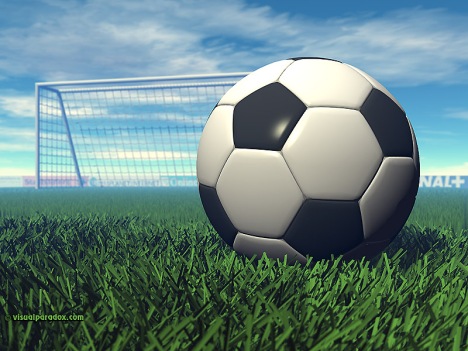They deal with the basics - pitch size and markings, ball size and weight, goal posts, referees and assistants, ways of starting play and ways of scoring. Oh, and cautions and sendings off.
If it’s that simple, you may ask, how come there have been intense arguments ever since that first ball was kicked ?
Well, that’s the problem right there, I suppose. It’s a ball. It’s supposed to be spherical, between 27 and 28 inches circumference, weighing between 14 - 16 ounces and inflated to about 16lbs per square inch.
Everyone understands Newton’s principle of motion - a force applied to an object will cause that object to move in a way that is directly proportional to the force applied. Newton wasn’t a footballer, though.
What he avoided mentioning was the DIRECTION in which a kicked ball is likely to move. Because it’s a sphere, although you may want it to travel straight, the slightest deviation from the straight when you kick it means that it will veer to the left or right - and that’s without accounting for any spin you impart, which can make it loop up, skid along the surface, bend like a boomerang or rise like a rocket until it runs out of steam. It could also pop, of course (in which case, if it is during the course of a match, it is replaced by dropping the replacement ball at the place where the first ball became defective - Law 2).
In the unlikely event that you have never actually kicked a proper match ball, then you really ought to remedy this as soon as possible. There are some aspects of the game that can never be realistically replicated - what it’s like to take the fifth penalty in a shoot-out in a World Cup Final with an audience of 260 million, for example. This is called pressure, and does strange things to a person’s confidence. The experience of kicking a proper football, in a match, but under minimal pressure, can be experienced relatively easily without having to explain that you're a first timer.
Here's how. All you need to do is locate the nearest park on which matches are played on a Saturday or Sunday. They are easy to spot as, in addition to pitch markings, from about 9am at weekends you will see cars drawing up and disgorging as diverse a group of men (or women, these days) as you could wish to see, ranging from young, fitness addicts, barely out of school, or possibly still at school, right through to grizzled old-timers who swear each week that this will be their last game. They will be squeezing their corny, calloused feet into dirty boots, carrying goal nets about, inserting corner flags and having a last minute fag before kick-off. There will be a scattering of spectators - in the case of men this is usually the new girlfriend of one or two of the players (that’s a separate girlfriend for each player in most cases), possibly a wife, although this is stretching marital devotion, and perhaps a parent or two of the younger players. Women players tend to attract their own female friends, who may or may not be accompanied by their boyfriends.
There may even be a scout from a bigger club - it depends on the game. What there won’t be, and this is where you come in, is anything behind the goal to prevent the ball from travelling miles after a bungled shot. All you need to do is position yourself a reasonable distance behind a goal and wait. At some point in the match you will have the opportunity to retrieve the ball, as no player really wants to expend energy chasing after a dead ball. All you have to do is walk nochalantly after the ball and then kick it back in the direction of the goal. All eyes will be on you as you do this, incidentally, but that is invaluable in itself for appreciating in microcosm the pressure on the penalty taker. If this is the first time that you have ever kicked a proper football, and your experience to date is watching how players on the telly can effortlessly bend a lobbed ball 60 yards directly to a team-mate’s left foot, you will be surprised at how short a distance you can actually impel it. It will be pretty much the same type as those used in any other match, but will be harder than you think, and heavier and the thing will not travel anywhere near the direction in which you kick it. Oh, and by the way, if you do it wrong, and use your big toe there’s a good chance you’ll break it (your toe, not the ball). That’s it. You’ve made contact and it’s your first learning experience, that kicking a ball to where you want it to go is nothing like as easy as it looks. (If you have fortuitously managed to return the ball to the goalie, incidentally, then stroll back nonchalantly to where you were stood, perhaps innocently inspecting your fingernails, or maybe considering an important text or tweet. If, as is more likely, you have sent the ball about half the distance of a nonchalant spit and only approximately in the intended direction, immediately pull out your mobile phone as though temporarily distracted by its ring and walk urgently away from the area. Do not look back.)

From now on, this blog will assume that you appreciate the finer points of kicking a football and are ready to move on to what can be done with it.


No comments:
Post a Comment